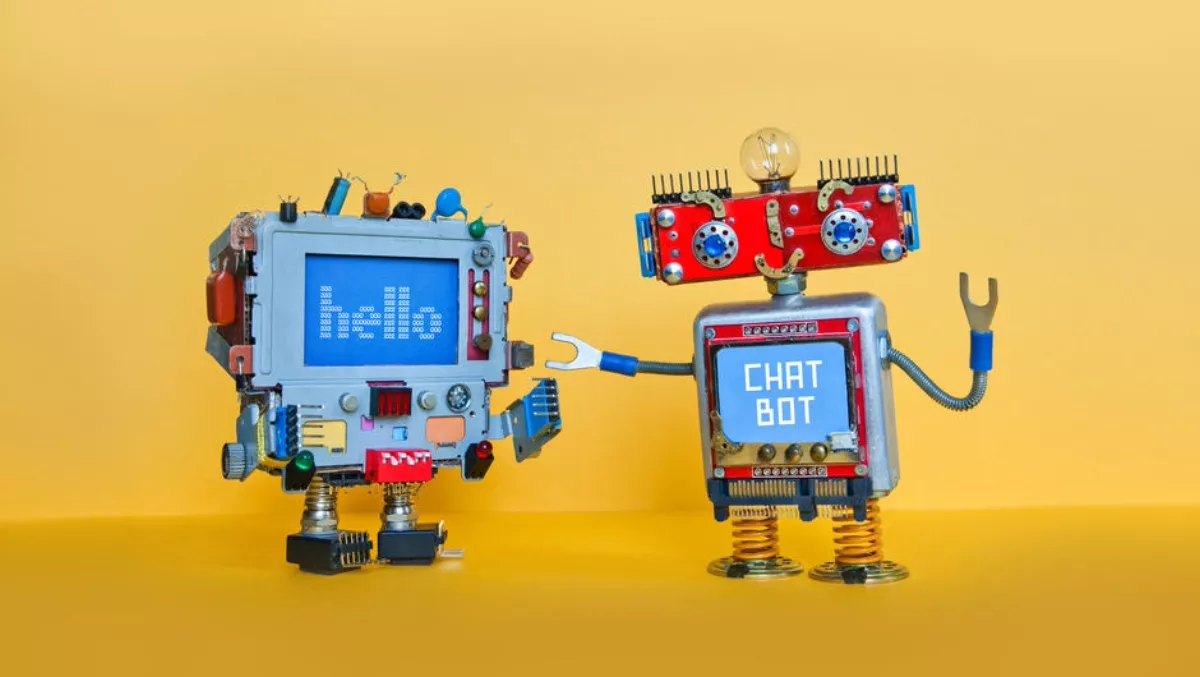
Today's CIOs will soon expect to lead a team of virtual assistants to win the hearts and minds of customers and make more money.
Chatbots have already begun to make their presence known at the forefront of many businesses, and this is set to accelerate.
Gartner, for one, predicts that by 2021, more than 50% of enterprises will spend more on bots than they do on standard mobile apps. That's a seismic shift, given how prominent mobile currently is on most businesses' customer service agendas.
But is IT ready for this new change?
Chatbots aim to normalise customer interactions at scale by standardising the experience regardless of call centre and help desk operators.
For basic questions and tasks, they offer reliability and consistency of service, especially for customer support and administrative tasks. For businesses looking to scale their customer support and workplace services, chatbots become an effective solution, deploying incredibly quickly into new markets and language groups compared to the on-boarding process of newly hired people.
Chatbots bring material value to the business.
However, many enterprises still hesitate to bring chatbots into production.
Often this is because chatbots are considered either too expensive or too complex to sustain long-term. Recent developments have changed all that. IT leaders need to readjust their thinking around chatbots to focus on responsiveness and tailored experiences if they want to stay ahead of their competition.
The New Rules of Engagement
The costs of chatbots are no longer prohibitive for businesses, even smaller ones.
Platforms like Amazon Lex, which powers Amazon Alexa, and the Microsoft Azure Bot Service typically charge less than a dollar per thousand text messages, with voice requests only costing slightly more.
These as-a-service models have done away with the extensive chain of developers, business managers, and IT ops staff required to develop and deploy chatbots in the past.
Moreover, they come with integration to other respective services like AWS Lambda for AWS Cloud or Microsoft Cortana for Microsoft Azure.
In other words, IT leaders need to start thinking of chatbots as delivering another service, just like cloud infrastructure or security, to be provisioned, integrated, and managed within the enterprise ecosystem and budget.
IT leaders should consider how much scalability, customisation, and integration with other adjacent services different platforms provide—keeping in mind, of course, that extra flexibility inevitably comes with extra financial responsibility.
However, just because you are consuming a cloud service provider's -as-a-service doesn't make chatbots a “set it and forget” solution.
On the contrary, IT leaders should pay attention to how their new bots perform on the job, both with respect to customer satisfaction and running effectively. The more you can observe of your chatbots' operations, the better you can control them.
Observe and Adapt
That introduces a new criterion to how IT leaders make their choice of chatbots: observability.
Simply put, observability is a measure of how well you can assess what's going on within a system based on what you can see of its outer characteristics.
Observability matters for any IT consumption model, like containerised IT, that operates in a black-box environment where you don't have immediate access to underlying systems.
What measures of observability should IT leaders look for?
The correlated combination of logs and events, tracing, and metrics give IT the best context of how chatbots are performing.
Key metrics from these three pillars of observability establish baselines for digital experience monitoring, which measures an end-user's experience.
Happy customer, happy IT life.
Again, observability also applies to the platform where your chatbots live. IT leaders will want the ability to check and scale the resources to meet service consumption for themselves.
The better you observe your chatbots' resources, the easier it is to identify and remediate any potential bottlenecks or issues. The result ends with better business continuity that delivers better customer experience.
For chatbots to function as an effective part of the business, they must adapt to the demands and meet or exceed customer expectations.
For that to happen, the CIOs and IT managers overseeing them need the means to observe what's happening in the field.
Emphasising the trifecta of logs and events, traces, and metrics give IT leaders the source of truth on how their chatbots really perform and the feedback that they need to control them toward ongoing customer wins.